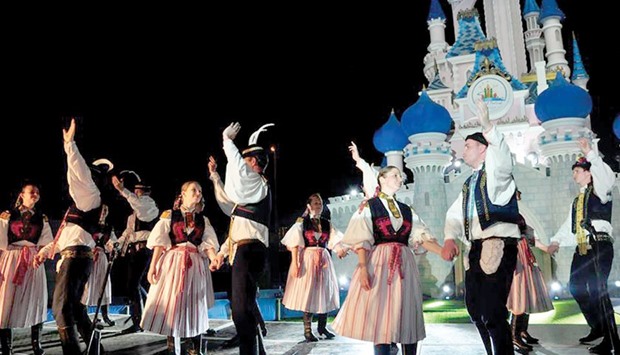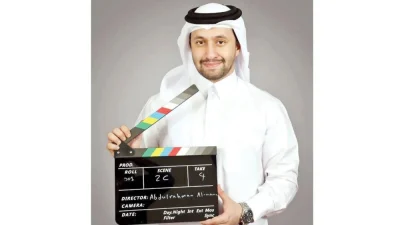Call it the ultimate cultural unification programme. Never running out of charisma or colours, the nearly five-month-long Cultural Diversity Festival at Katara is now well past the half way mark, while visitors to its performances are only growing by the week and its organisers promise to maintain the momentum that it has so steadily gathered.
Organised as part of the Intercultural Dialogue and Cultural Diversity Programme of Unesco in Qatar and funded by Katara in order to promote cultural diversity and cross-cultural understanding and awareness, the Festival will bring down performing groups from a total of 21 countries representative of all continents to Katara to perform three days each.
Rabih Karam, Managing Partner of Art & Art, which is organising the performances week after week, told Community, “It’s really a unique festival in Qatar as nobody before has put together such a mega international event that has gone on for five months. At Art and Art, we work with more than 1,500 artiste groups across the world, and for this event, we have been bringing down the choicest of dance and music groups from various countries.”
The performances will be organised every week until the end of May to mark the World Day for Cultural Diversity for Dialogue and Development on May 21. Karam admits that it’s not an easy task. “The whole process is challenging because of the large number of people that we deal with. We are talking about more than 300 artistes, and managing everything from their flights to accommodation. Even if one artiste misses the plane, we will have no event. However, having handled such events for years on end, we put our experience to good use and it’s been wonderful showcasing such talents in Doha,” he said.
It was the Philippine national folk dance company Bayanihan, which flagged off the Festival in pomp and splendour on January 11 and took the people of Qatar into folklore and beyond. This act was followed up by India’s Aparajita & Troupe show, the Nairobi National Dance Ensemble, Georgia’s Youth Folkloric Ballet ‘Egrisi’, and so on. The other countries that have taken part at this Festival thus far are Tajikistan, Serbia, Jordan, Spain, Senegal, Austria, Tunisia, and Czech Republic.
“On April 17 and 18, we have performers coming down from Italy, which will be followed by acts from Saudi Arabia, Turkey, Singapore, Russia, Burkina Faso, Cuba, Japan, and Argentina, over the coming weeks,” Karam said, “So far, we have had a full house for every performance, which features one country every week at the Katara Esplanade. While the group performs in Katara for two consecutive evenings, for the third day, we collaborate with the embassy of that country to get the group to perform at the venue chosen by the embassy. For instance, the Bayanihan, on its third day in Doha, performed at the Philippine School Doha for students and teachers.”
Art & Art is a leading Qatar-based company engaged in media and events management that caters for the GCC, and has organised big-ticket events in Qatar such as the Latin American Cultural Festival, First Bravo! Flamenco Festival, and the My Coffee My Identity event last month, among others. Karam is thrilled that his company has been tasked with organising this Festival. “The title says it all. The Cultural Diversity Festival is all about presenting the country’s essence through its music, dance and art. It gives us a glimpse into how the people of each of these participating countries live their daily lives, how they deal with love, war, challenges, and most importantly how they share happiness. This precious cultural knowledge is passed down to Qatar through their art, music, and dance,” explained Karam.
“Be it how women are treated in their societies or how they process relationships; to learn all of this is the real value of the event. Through this programme, we have been able to show to the Qatari society, how multi-cultural countries can live together, have people coming from diverse cultures and live together with synergy,” he said.
Karam believes that such cultural fusion can lead to amazing revelations. “For instance, some of the artists and groups are deeply influenced by other cultures. When the Spanish group performed flamenco, the Arab audience could spot how the flamenco music and dance have elements very similar to what the Arabic Andalusi music would have. Flamenco has traces of Al-Mawal, which is essentially a song with powerful vocals. If you pay attention, you can hear this in flamenco,” Karam said.
As for the closing ceremony slated for the last week of May, Karam assures Doha a big surprise. “The surprise will be the most befitting one for such a grand event. It will definitely feature some of the most spectacular performance art groups in addition to the manifestation of the Qatari culture, which will be displayed through Qatari music and dance,” he said.

Oslava Dance Group from the Czech Republic performed earlier this week.


